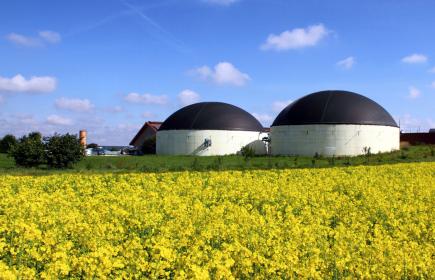Biogas: Not only a fuel but also a resource for platform chemicals

(28-05-2018)
UGent professors contributed to research on the possible use of biomass-derived biogas for the synthesis of chemical building blocks.
Biogas, for a large part consisting of methane, originates from the anaerobic digestion of organic waste. Today, this biogas is typically combusted to generate electricity and heat, which is incentivized by regulatory support schemes. However, only one third of the energy contained within the biogas can be transferred into electricity. The other part is lost as heat of which only one third can be recuperated.
The team of Prof. Rabaey, Prof. Van Geem and Prof. Marin propose an alternative scenario in which the biogas is first upgraded towards biomethane, which can be injected into the existing gas grid. In this way, the biogas can be considered as a means to connect the decentralized biomass production to a centralized gas grid. In a second step, the biomethane from the grid can be used elsewhere to produce CO, syngas or H2. The team of Prof. Marin recently developed the so called super-dry reforming approach which is a very efficient way to convert CO2 into CO upon reaction with methane. This CO can be used as a feedstock for the synthesis of platform molecules.
This approach avoids biomass transportation, in contrast with present biorefineries, while effectively valorizing decentralized biomass feedstocks such as agricultural waste or energy crops. Even without subsidies, at present values and costs, this creates an economically positive case which can promote anaerobic digestion as an important driver for a new bio-industry.
Reference to the full paper: Energy Environ. Sci. 2018, DOI10.1039/C8EE01059E
Upgrading the value of anaerobic digestion via chemical production from grid injected biomethane
Kristof Verbeeck, Lukas C. Beulens, Vladimir V. Galvita, Guy B. Marin, Kevin M. Van Geem and Korneel Rabaey
Info
Prof. Korneel Rabaey
Korneel.Rabaey@UGent.be